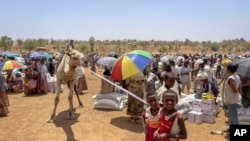Nearly 20 million people living in the Horn of Africa are facing a crisis of food insecurity. The region has suffered four consecutive droughts and is looking at a fifth come October. “The Horn region has two rainy seasons per year,” said USAID Administrator Samantha Power, who recently visited some of the most seriously affected regions in Somalia and Kenya. This is the first time in history, she stressed at a recent talk here in Washington, that the Horn of Africa has suffered four consecutive failed rainy seasons.
“[T]oday pasturelands are turning to dust. And in near-biblical scenes, weakened farm animals are dying of disease. To date, at least 7 million livestock have already died in Ethiopia, Kenya, and Somalia. There just isn’t enough water to quench their thirst or enough grass to feed them.”
Through the United States Agency for International Development, or USAID, the government of the United States is providing critical humanitarian assistance totaling $1.2 billion to the three most severely affected countries in the region: Ethiopia, Kenya, and Somalia. Early humanitarian investments are critical to saving lives.
In Ethiopia this year alone, the United States is providing $668 million in support of more than 8.1 million people whose survival is threatened by the historic drought.
In Kenya, the drought has pushed more than 4 million people to the edge of starvation, with communities in the arid and semi–arid land counties having been hit the hardest. By the end of May, some 70 percent of crops were reported lost, along with at least 2.4 million head of livestock. USAID is providing to the people of Kenya nearly $255 million in emergency food and other critical humanitarian and development assistance.
And in Somalia, 7.1 million people are affected by this crisis. More than 3 million agricultural animals have died. And 1.4 million children are facing acute malnutrition through the end of the year.
USAID is providing $476 million in critical humanitarian and development aid to the people of Somalia, bringing the U.S. total assistance for this year to more than $707 million.
This humanitarian aid illustrates the United States' continuing commitment to the welfare of the people of Ethiopia, Kenya, and Somalia. “We urge other partner governments,” said Administrator Power, “to join us in significantly increasing their own commitments to prevent widespread famine and millions of deaths.”














